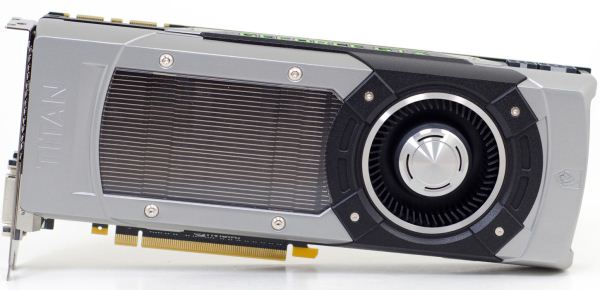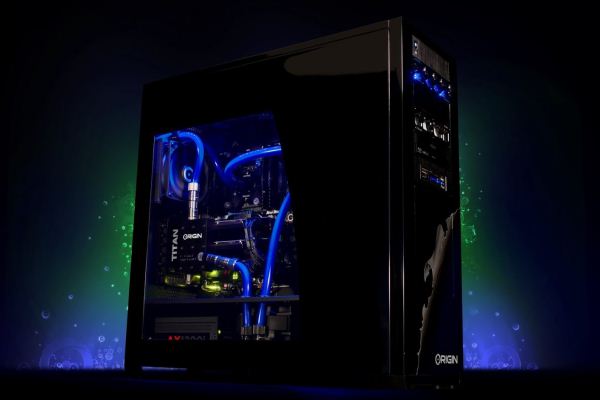NVIDIA’s GeForce GTX Titan Review, Part 2: Titan's Performance Unveiled
by Ryan Smith & Rahul Garg on February 21, 2013 9:00 AM ESTFinal Thoughts
Bringing things to a close, most of what we’ve seen with Titan has been a long time coming. Since the introduction of GK110 back at GTC 2012, we’ve had a solid idea of how NVIDIA’s grandest GPU would be configured, and it was mostly a question of when it would make its way to consumer hands, and at what clockspeeds and prices.
The end result is that with the largest Kepler GPU now in our hands, the performance situation closely resembles the Fermi and GT200 generations. Which is to say that so long as you have a solid foundation to work from, he who builds the biggest GPU builds the most powerful GPU. And at 551mm2, once more NVIDIA is alone in building massive GPUs.
No one should be surprised then when we proclaim that GeForce GTX Titan has unquestionably reclaimed the single-GPU performance crown for NVIDIA. It’s simply in a league of its own right now, reaching levels of performance no other single-GPU card can touch. At best, at its very best, AMD’s Radeon HD 7970GE can just match Titan, which is quite an accomplishment for AMD, but then at Titan’s best it’s nearly a generation ahead of the 7970GE. Like its predecessors, Titan delivers the kind of awe-inspiring performance we have come to expect from NVIDIA’s most powerful video cards.
With that in mind, as our benchmark data has shown, Titan’s performance isn’t quite enough to unseat this generation’s multi-GPU cards like the GTX 690 or Radeon HD 7990. But with that said this isn’t a new situation for us, and we find our editorial stance has not changed: we still suggest single-GPU cards over multi-GPU cards when performance allows for it. Multi-GPU technology itself is a great way to improve performance beyond what a single GPU can do, but as it’s always beholden to the need for profiles and the inherent drawbacks of AFR rendering, we don’t believe it’s desirable in situations such as Titan versus the GTX 690. The GTX 690 may be faster, but Titan is going to deliver a more consistent experience, just not quite at the same framerates as the GTX 690.
Meanwhile in the world of GPGPU computing Titan stands alone. Unfortunately we’re not able to run a complete cross-platform comparison due to Titan’s outstanding OpenCL issue, but from what we have been able to run Titan is not only flat-out powerful, but NVIDIA has seemingly delivered on their compute efficiency goals, giving us a Kepler family part capable of getting far closer to its theoretical efficiency than GTX 680, and closer than any other GPU before it. We’ll of course be taking a further look at Titan in comparison to other GPUs once the OpenCL situation is resolved in order to come to a better understanding of its relative strengths and weaknesses, but for the first wave of Titan buyers I’m not sure that’s going to matter. If you’re doing GPU computing, are invested in CUDA, and need a fast compute card, then Titan is the compute card CUDA developers and researchers have been dreaming of.
Back in the land of consumer gaming though, we have to contend with the fact that unlike any big-GPU card before it, Titan is purposely removed from the price/performance curve. NVIDIA has long wanted to ape Intel’s ability to have an extreme/luxury product at the very top end of the consumer product stack, and with Titan they’re going ahead with that.
The end result is that Titan is targeted at a different demographic than GTX 580 or other such cards, a demographic that has the means and the desire to purchase such a product. Being used to seeing the best video cards go for less we won’t call this a great development for the competitive landscape, but ultimately this is far from the first luxury level computer part, so there’s not much else to say other than that this is a product for a limited audience. But what that limited audience is getting is nothing short of an amazing card.
Like the GTX 690, NVIDIA has once again set the gold standard for GPU construction, this time for a single-GPU card. GTX 680 was a well-built card, but next to Titan it suddenly looks outdated. For example, despite Titan’s significantly higher TDP it’s no louder than the GTX 680, and the GTX 680 was already a quiet card. Next to price/performance the most important metric is noise, and by focusing on build quality NVIDIA has unquestionably set the new standard for high-end, high-TDP video cards.
On a final note, normally I’m not one for video card gimmicks, but after having seen both of NVIDIA’s Titan concept systems I have to say NVIDIA has taken an interesting route in justifying the luxury status of Titan. With the Radeon HD 7970 GHz Edition only available with open air or exotic cooling, Titan has been put into a position where it’s the ultimate blower card by a wide margin. The end result is that in scenarios where blowers are preferred and/or required, such as SFF PCs or tri-SLI, Titan is even more of an improvement over the competition than it is for traditional desktop computers. Or as Anand has so eloquently put it with his look at Falcon Northwest’s Tiki, when it comes to Titan “The days of a high end gaming rig being obnoxiously loud are thankfully over.”
Wrapping things up, on Monday we’ll be taking a look at the final piece of the puzzle: Origin’s tri-SLI full tower Genesis PC. The Genesis has been an interesting beast for its use of water cooling with Titan, and with the Titan launch behind us we can now focus on what it takes to feed 3 Titan video cards and why it’s an impeccable machine for multi-monitor/surround gaming. So until then, stay tuned.












337 Comments
View All Comments
CeriseCogburn - Saturday, February 23, 2013 - link
Stop whining along with the rest of them, grow a set, get a job, and buy two of them.Might do you some good.
Alucard291 - Sunday, February 24, 2013 - link
Unlike you, I have a job :)chizow - Sunday, February 24, 2013 - link
Good point, I'd tend to agree with that assessment as anyone who actually works for their money would not be so eager to part with it so quickly in $1K denominations for what amounts to a glorified pinball machine.He's probably a kid who has never had to work a day in his life or a basement dweller who has no hope of ever buying one of these anyways.
CeriseCogburn - Sunday, February 24, 2013 - link
And now with the pure troll, the lying idiot conspiracist nVidia hater takes on the pure personal attack for a big fat ZERO score.Congratulations, you and your pure troll can high five each other and both be wrong anyway, for another yer or two, or the rest of your whining crybaby posting PC herd idiot mentality lives.
Alucard291 - Friday, March 8, 2013 - link
No no kid. You're the "pure troll here"So yeah go get a job and buy two of them. For yourself. Stop being angry at us for not being able to afford it
~lol~
wiyosaya - Thursday, February 21, 2013 - link
While I understand your frustrations, IMHO, this is a card aimed at those wanting the compute performance of a Tesla at 1/3 the cost. As I see it, nVidia shot themselves in the foot for compute performance with the 680, and as such, I bet that 680 sales were less than expected primarily because of its crappy compute performance in comparison to say even a 580. This may have been their strategy, though, as they might have expected $3,500 Teslas to fly off the shelf.I am also willing to bet that Teslas did not fly off the shelf, and that in order to maintain good sales, they have basically dropped the price of the first GK110s to something that is reasonable with this card. Once can now buy 3.5 Titan's for the price of the entry level GK110 Tesla, and I highly expect nVidia to make a profit rather than the killing that they might have thought possible on the GK110 Teslas.
That said, I bet that nVidia gets a sht load of orders for this card from new HPC builders and serious CAD/CAE workstation suppliers. Many CAD/CAE software packages like SolidWorks and Maple support GPGPUs in their code making this card a bargain for their builds.
My apologies, to all the gamers here but us compute nerds are drooling over this card. I only wish I could afford one to put in my i7-3820 build from July. It is more than 2x what I paid for a 580 back then, and the 580 buy was for its compute performance.
atlr - Thursday, February 21, 2013 - link
wiyosaya, I am trying to come up to speed on comparing compute performance between Nvidia and AMD options. Is the Titan drool-worthy only for software that only uses CUDA and not OpenCL? This reminds me of the days of Glide versus OpenGL APIs.trajan2448 - Friday, February 22, 2013 - link
AMDs fps numbers are overstated. They figured out a trick to make runt frames, or frames which are not actually rendered to trigger the fps monitor as a real fully rendered frame. This is real problem for AMD much worse than the latency problem. Crossfire is a disaster which is why numerous reviewers including Tech Report have written that Crossfire produces higher fps but feels less smooth than Nvidia.Check this article out. http://www.pcper.com/reviews/Graphics-Cards/NVIDIA...
chizow - Saturday, February 23, 2013 - link
That's an awesome analysis by PCPer, thanks for linking that. Might end up being the biggest driver cheat scandal in history. Runt framesgate lol.CeriseCogburn - Saturday, February 23, 2013 - link
HUGE amd cheat.It's their standard operating procedure.
The fanboys will tape their mouths, gouge out their eyes and stick fingers in their ears and chant: "I'm not listening".